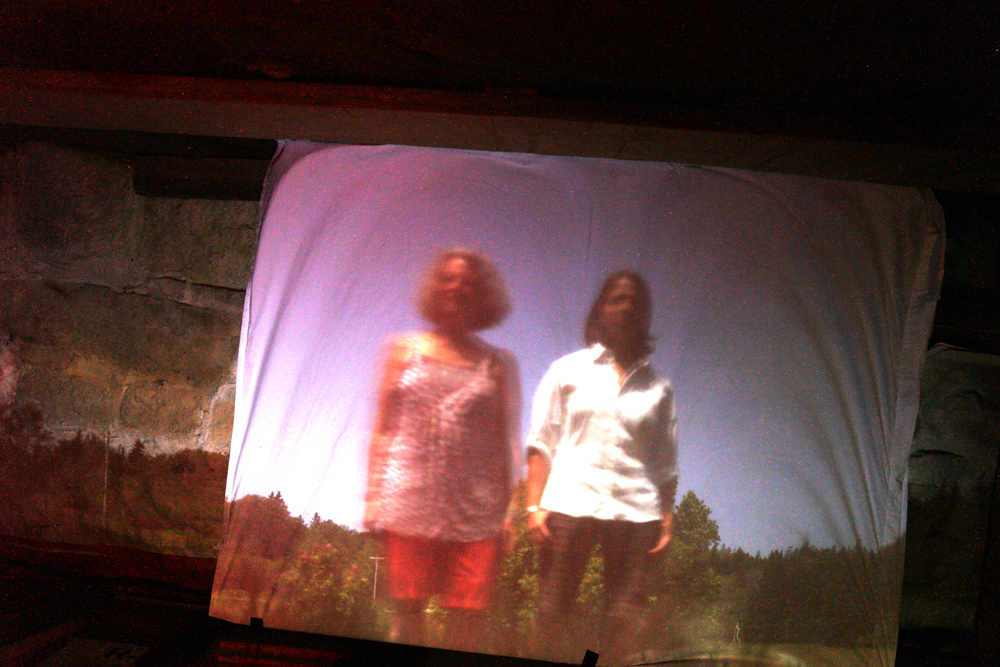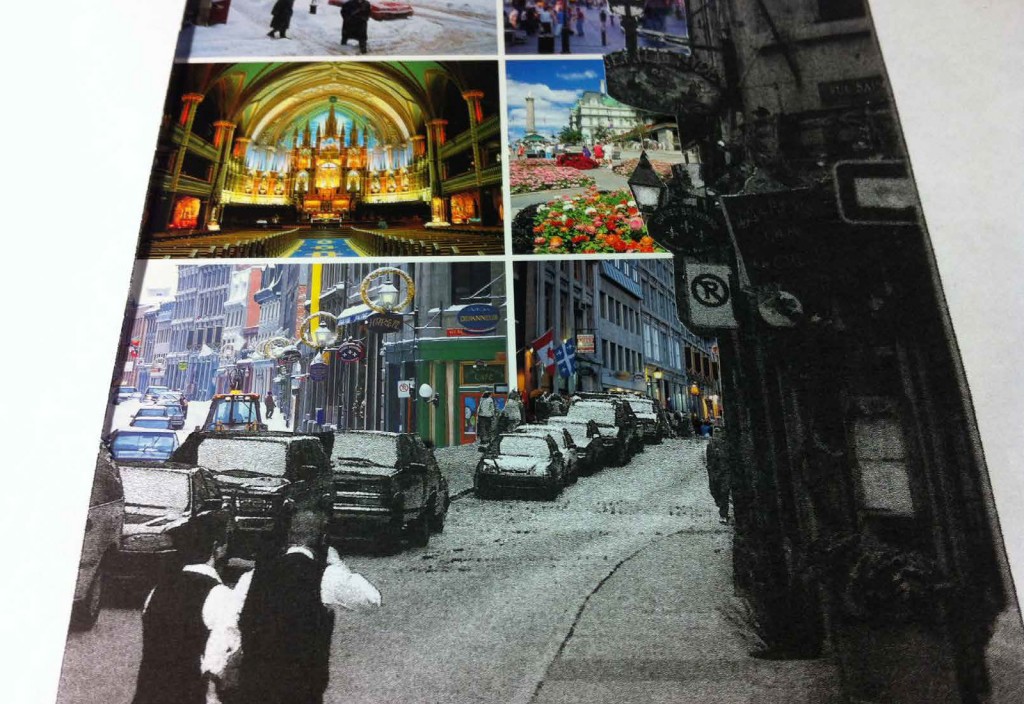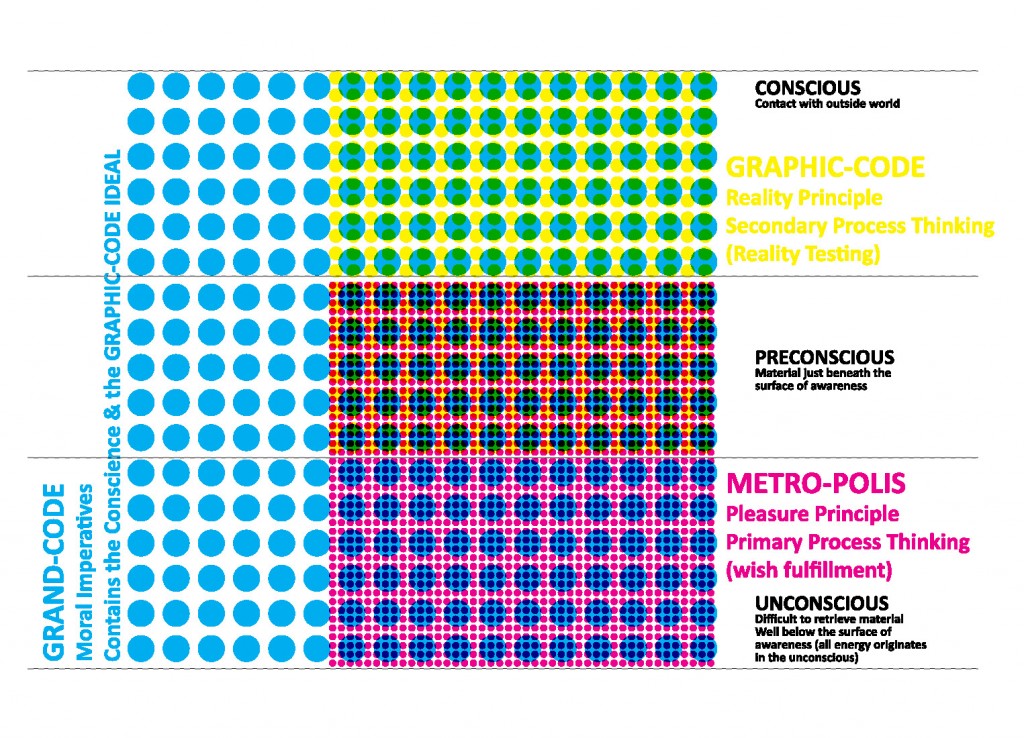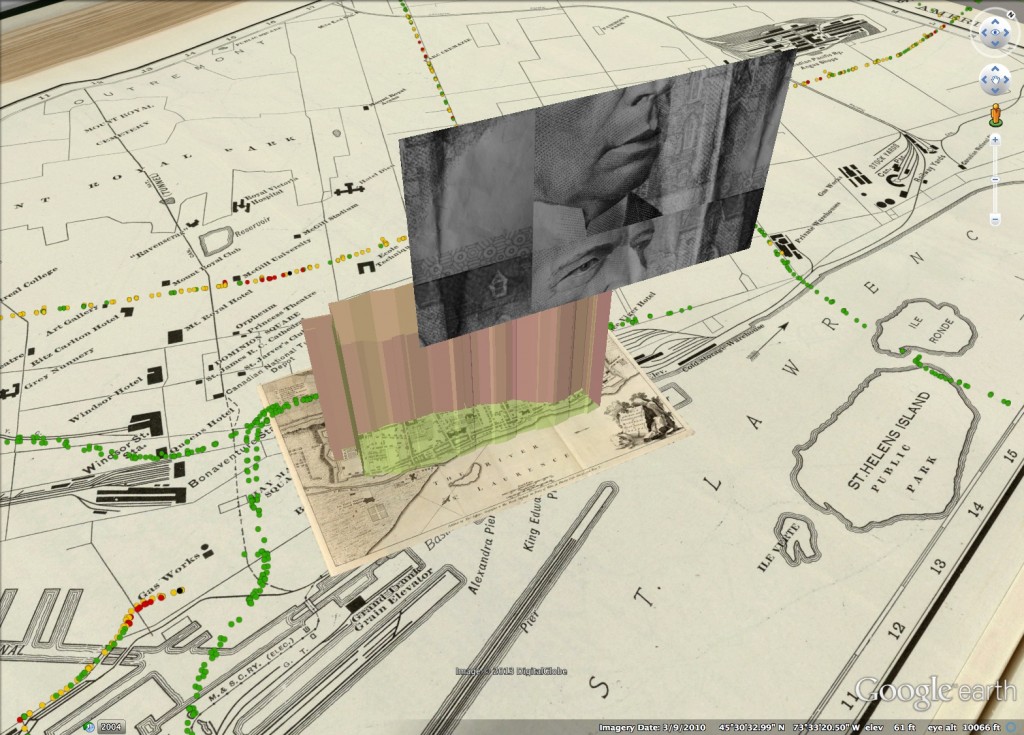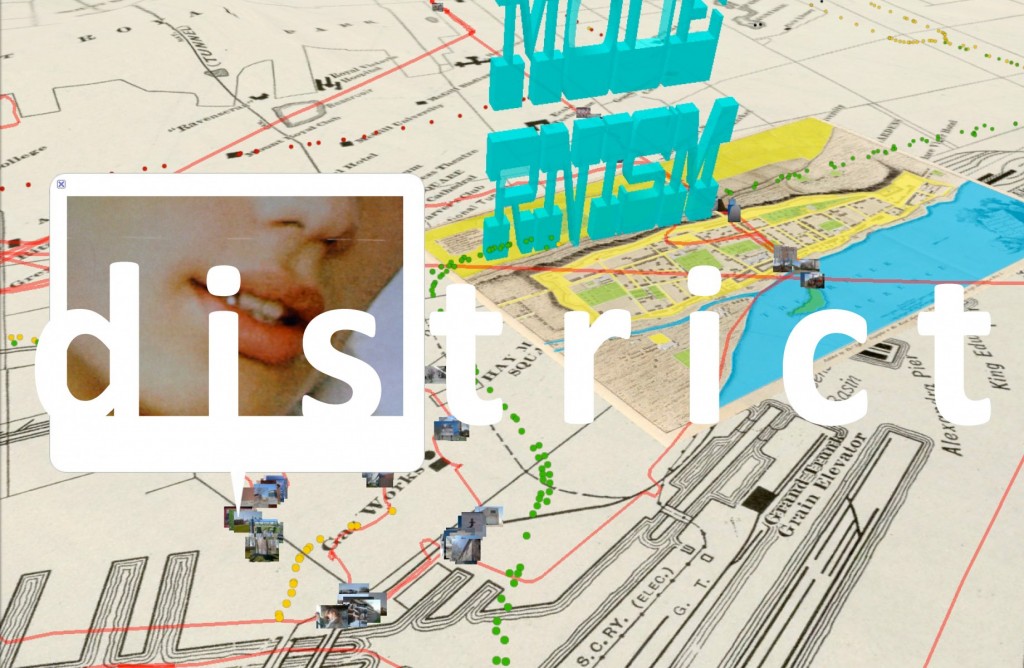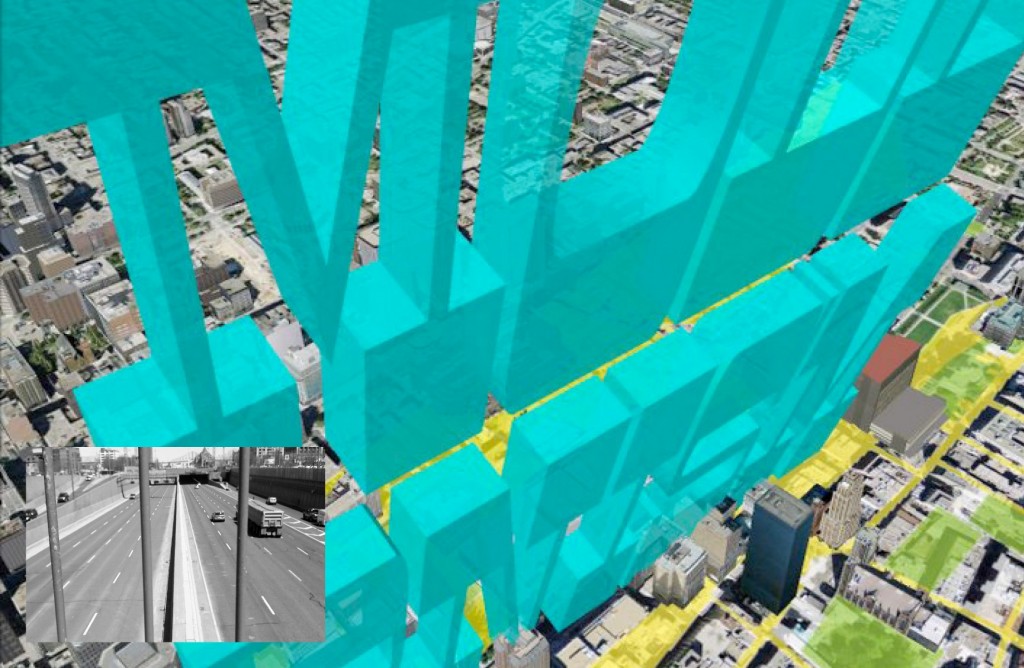“The reform of consciousness consists solely in… the awakening of the world from its dream about itself”[3]
“The Graphic-Code and the Metro-Polis” develops a line of reasoning as a groundwork for explaining various (or perhaps all) graphic conditions, pathological and non-pathological alike, of the city. These conditions result from powerful internal tensions—for example: 1) between the Graphic-Code and the Metro-Polis, 2) between the Graphic-Code and the Grand-Code. This deals primarily with the Graphic-Code and the effects these tensions have on it.
The Graphic-Code—caught between the Metro-Polis and the Grand-Code—finds itself simultaneously engaged in conflict by repressed noumena in the Metro-Polis and relegated to an inferior position by the Grand-Code.
The outline below is an exegesis of the arguments, explicating the formation of the aforementioned tensions and their effects.
Exegesis
Presuppositions: “Consciousness and the Unconscious”
All concepts in The Graphic-Code and the Metro-Polis are built upon the presupposed existence of conscious and unconscious noumena. On the first line, it states, “[About consciousness and the unconscious] there is nothing new to be said… the division of the graphic life of the city into what is conscious and what is unconscious is the fundamental premise on which the Ad-Hoc Atlas is based” (9). It further distinguishes between two types of unconscious noumena: “preconscious”, which are latent yet fully capable of becoming conscious; and “unconscious”, which are repressed and cannot become conscious without the help of an Atlas.
It would be overly simple to assume that the unconscious and the conscious map directly onto the Metro-Polis and the Graphic-Code, respectively. It argues that (according to work with Ad-Hoc Atlas) the supposedly conscious Graphic-Code can be shown to possess unconscious noumena (16) when it unknowingly resists parts of itself. Thus, a third kind of unconscious thought seems to be necessary, a process that is neither repressed nor latent (18), but which is nonetheless an integral part of the Graphic-Code: the act of repression.
If this is true, he argues that the idea of “unconsciousness” must be reevaluated: contrary to prior belief, urban psychodynamics cannot be fully explained by a tension between unconscious and conscious noumena. A new framework is required, one that further examines the status of the Graphic-Code.
Mapping the New Framework: “The Graphic-Code and the Metro-Polis”
Before defining the Graphic-Code explicitly, he argues for a manner in which unconscious noumena can be made conscious. It believes the answer lies in the difference between unconscious noumena and preconscious noumena: the former are connected to perceptions, especially “verbal images,” while the latter are “worked out upon some sort of material that remains unrecognized” (21). The difference, then, is a connection to images (more specifically, to the “memory residue” of images.) The goal of Ad-Hoc Atlas, then, is to connect the freely floating unconscious material to images via psychic visual dialogue.
He[4] goes on to note that the Graphic-Code is essentially a system of perception, so it must be closely related to the preconscious (27). Thus, two primary components of Graphic-Code are a system of perception and a set of unconscious (specifically, preconscious) ideas. Its relationship to the unconscious Metro-Polis, therefore, is a close one. The Graphic-Code merges into the Metro-Polis(28). He compares the dynamic to that of a rider and a horse. The Graphic-Code must control the Metro-Polis, like the rider, but at times, the rider is obliged to guide the horse where it wants to go. Likewise, the Graphic-Code must, at times, conform to the desires of the Metro-Polis. Finally, the Graphic-Code is a “modified portion” of the Metro-Polis that can perceive the empirical world (29). It is this idea of perception that leads him to call the Graphic-Code a “City-Graphic-Code” (31)—a visual projection of the surface of the one’s material city.
Further Complication: “The Graphic-Code and the Grand-Code (Graphic-Ideal)”
The matter, unfortunately, grows even more complicated: the Graphic-Code is divided into two parts—the Graphic-Code itself and the Grand-Code—or the Graphic-Ideal (34). Although he seems never to argue for the existence of a Grand-Code in the Graphic-Code and the Metro-Polis (save to reference one of his earlier works in a footnote), we may consider a need for the Grand-Code implicit in his previous arguments. Indeed, the Grand-Code is the solution to the mystery raised in the first chapter—the unconscious part of the Graphic-Code, the part that acts in a repressive capacity.
His argument for the formation of the Grand-Code hinges on the idea of internalization—a processes in which (after a formerly present object becomes absent) the City creates an internal version (vision) of the same object. The subject constructs a new object within the Graphic-Code—to mitigate the pain of loss. The Graphic-Code, in some sense, becomes the object (at least as far as the Metro-Polis’ drive is concerned.) The love of the Metro-Polis is redirected—away from the external world—and turned inward.
Key Conclusions: “The Subordinate Relationships of the Graphic-Code”
In this final chapter, he calls the Graphic-Code “the innocent Graphic-Code.” If the ideas he posits here are accurate, then the Graphic-Code, indeed, finds itself a victim to the stronger Grand-Code and Metro-Polis (which tend to work together.) “The Grand-Code is always in close touch with the Metro-Polis and can act as its representative in relation to the Graphic-Code” (70). He cites his experiences in Ad-Hoc Atlas, in which cities exhibit a sense of guilt that makes them resistant to conquering their pathology. His explanation is that the Grand-Code condemns the Graphic-Code—“[displaying] particular severity and [raging] against the Graphic-Code with the utmost cruelty” (73) and giving it a deep-seated, mysterious feeling of guilt.
The Graphic-Code finds itself trying to both appease and mediate the desires of the Metro-Polis. It stands on a middle ground between the Metro-Polis and the outside world, trying to make the Metro-Polis conform to societal rules, while trying to make the world conform it the Metro-Polis’ innermost passions. This task falls to the Graphic-Code because it is the only part of the City capable of exercising direct control over the actions of the Urban. The relationship of the Graphic-Code to the Metro-Polis is, at the same time, a mutually beneficial one and a submissive one: “[The Graphic-Code] is not only the ally of the Metro-Polis; it is also a submissive slave who courts the love of his master” (83).
Thus the Graphic-Code finds itself the seat of anxiety, beset by potential dangers from three directions (84)—by the Grand-Code, the Metro-Polis, and (not to mention) the external world.

[1] “Alternatively, the image of the dialectical image might be something like a vector diagram showing the resultant of the forces signified by the claims of history, truth, material and meaning; or perhaps something like a flow diagram laying out and comparing the procedural steps from component operations such as perception, collection, combination, metaphor and mimesis, towards synthetic constructions such as allegory, montage, mosaic and treatise.”
Anthony Auerbach, “Image and Narrative – Article,” Image and Narrative, no. 18 (September 2007), http://www.imageandnarrative.be/inarchive/thinking_pictures/auerbach.htm.
[2] http://en.wikipedia.org/wiki/The_Ego_and_the_Id
[3] Marx 1932 cited in Benjamin, Walter 2002 – The Arcades Project, trans’ Eiland H & McLaughlin K, Belknap, Cambridge MA.: 456
[4] “…the image is a dimension of reality made recognizable rather than a representation in the mind, whether past or present. (In that respect it would have been better to translate the German Bild as “picture,” as when we say that things can suddenly present a different picture.)” Eli Friedlander, “The Measure of the Contingent: Walter Benjamin’s Dialectical Image,” boundary 2 35, no. 3 (Fall 2008): 1-26.
